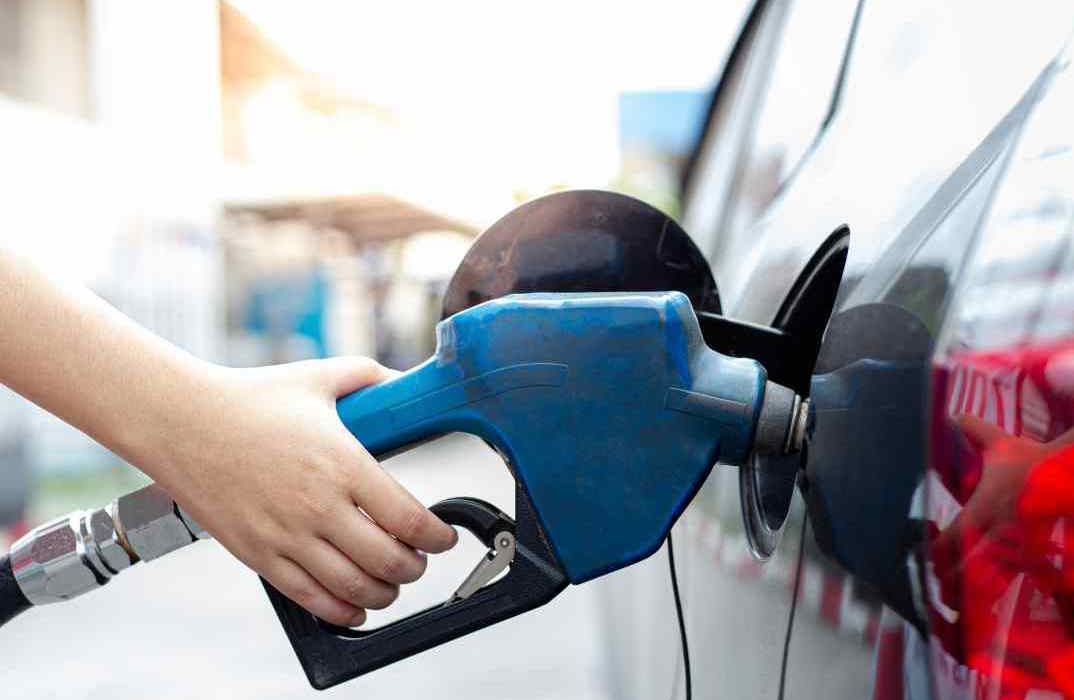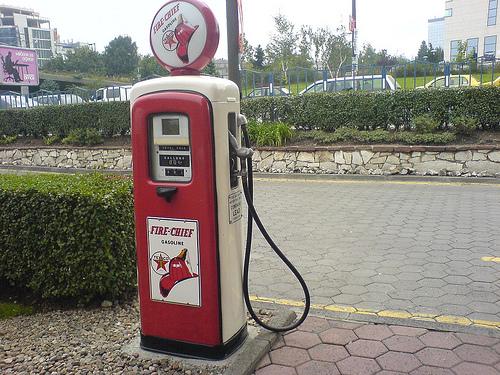
Introduction
From reducing greenhouse gas emissions to providing an affordable source of fuel, the introduction of E15 ethanol into the marketplace has generated much debate and discussion. But do the benefits of this renewable energy source outweigh the potential damages it could cause to modern cars? This topic is highly controversial and often confusing for consumers, so let's dive in and uncover what is really behind the use of E15 ethanol, and whether or not it is really beneficial or damaging to our cars.
Definition of Ethanol
Ethanol is an alcohol-based fuel, produced by fermenting and distilling sugars and starches from agricultural crops. It can be used as a renewable energy source, as it is made from plant materials that can be replenished over time. It is also considered to be a “cleaner” burning fuel than traditional gasoline, with fewer emissions of harmful pollutants, such as carbon monoxide and hydrocarbons. The most common blend of ethanol in the United States is E15 which contains 15 percent ethanol and 85 percent gasoline. While this blend has been approved for use in certain vehicles since 2011, engines designed before this date may not handle it well due to the higher concentration of ethanol content.
The benefits of using E15 ethanol are numerous. For starters, it helps to reduce greenhouse gas emissions significantly when compared to traditional gasoline. Since ethanol burns cleaner than gasoline, there are fewer harmful pollutants released into the atmosphere when it's used. Additionally, it provides a much more affordable source of fuel for consumers who are looking to save money at the pump. Finally, with its potential for being produced from renewable sources like corn or sugarcane, it could reduce our dependence on foreign oil supplies while providing jobs in domestic agriculture industries.
Ultimately, whether or not E15 ethanol is beneficial or damaging to modern cars depends on several factors including the age and type of vehicle you have as well as local regulations concerning its usage in your area. But when used correctly in compatible vehicles with proper maintenance practices in place, this renewable energy source has many potential benefits that make it an appealing option for those trying to protect their pocketbooks and planet
Overall, it's clear that E15 ethanol can be a great choice for those looking to reduce their emissions and save money at the pump. But what else should you know about this fuel source? Stay tuned to learn a more thorough overview of E15 ethanol!
Benefits vs. Damages of E15 Ethanol
E15 ethanol has been touted as a renewable fuel source that can reduce greenhouse gas emissions and provide an affordable option for fueling up at the pump. However, there are potential damages associated with using this fuel that must be taken into consideration.
One of the biggest risks associated with E15 ethanol is its incompatibility with some car models. It is important to check with your manufacturer to make sure your vehicle can handle the fuel before filling up with it. Additionally, if you use E15 ethanol in an incompatible car, it can damage the engine and other parts of the vehicle.
It's also important to keep up with regular maintenance on your car when using E15 ethanol, as it can cause build-up in the engine over time if left unchecked. This build-up could lead to lower performance and potentially costly repairs down the road.
Overall, while there are benefits to using E15 ethanol – such as reducing emissions and saving money at the pump – it’s important to take all necessary precautions before filling up with it. Doing so will ensure your car performs optimally and stays safe from any potential damages caused by this renewable energy source.
Fuel Economy and Lower Gas Prices
The use of E15 ethanol is becoming increasingly popular as consumers look for ways to save money on gasoline. The higher octane rating of E15 ethanol allows for improved fuel economy and lower gas prices, making it a great option for those looking for an affordable alternative to regular gas. Additionally, the renewable energy sources used in the production of E15 ethanol provide a cleaner air while supporting local economies at the same time. Furthermore, its environmental benefits reduce greenhouse gas emissions by up to 15%. All in all, drivers can enjoy a host of advantages when they choose E15 ethanol over regular gasoline. From better performance and cost savings to improved fuel economy and lower gas prices, E15 ethanol offers an array of benefits that make it the perfect blend of sustainability and convenience. Make the switch today and start saving money on fuel - you won't regret it!
Reduced Greenhouse Gas Emissions
E15 ethanol is an excellent choice for drivers looking to reduce their greenhouse gas emissions. With up to 15% lower emissions than regular gasoline, E15 ethanol offers a cleaner and greener alternative that can help combat climate change. Additionally, its renewable energy sources mean that it produces significantly fewer air pollutants when compared to traditional fossil fuels. This makes E15 ethanol the perfect option for drivers who are looking to make a difference in the fight against global warming while still enjoying great performance and convenience. Not only does it provide a more sustainable option for powering our cars, but it also helps support local economies and reduce our dependence on foreign oil. All of these benefits make E15 ethanol a great choice for those who want to save money at the pump and do their part for environmental conservation at the same time!
Renewable Energy Source
E15 ethanol is quickly becoming one of the most popular renewable energy sources for powering modern cars. This fuel has a higher concentration of ethanol than standard gasoline, making it more efficient and reducing emissions significantly. E15 ethanol can help reduce greenhouse gas emissions by up to 15%, making it a great choice for drivers looking to do their part in protecting the environment. The renewable energy source also helps support local economies and creates jobs in the production process, furthering its positive environmental impact. Additionally, E15 ethanol is more affordable than other alternative fuels, meaning that drivers can save money at the pump while still enjoying great performance and convenience. All of these benefits make E15 ethanol an excellent choice for those looking to make a difference while still getting around town!
Disadvantages of E15 Ethanol
Despite the numerous benefits of using E15 ethanol, there are also some potential drawbacks that should be considered. For starters, some modern cars may not be designed to run on higher concentrations of ethanol, meaning that drivers could potentially experience reduced performance or even damage their vehicles if they use E15 ethanol. Additionally, some experts argue that the production process for E15 ethanol is more harmful to the environment than other alternative fuels. Finally, it is important to note that E15 ethanol has a shorter shelf life than regular gasoline and must be used within 90 days in order to retain its effectiveness. All of these factors should be taken into consideration when deciding whether or not to switch to E15 ethanol as a fuel source.
With all of the potential benefits and drawbacks associated with E15 ethanol, it is clear that drivers need to do their research before making the switch. But that’s not all: there is an additional factor that could make the switch even more difficult for some drivers – finding a station that offers E15 blends! Find out what that means in the next section.
Difficulty Finding Stations with E15 Blends
For many drivers, the decision to switch to E15 ethanol as a fuel source is complicated by the difficulty of finding a station that offers E15 blends. Many traditional gas stations have yet to incorporate pumps that supply E15 ethanol, meaning that drivers will have to look for alternative fueling locations if they want to make the switch. In addition, some states have yet to pass legislation authorizing the sale of higher concentrations of ethanol, further complicating the situation for prospective users.
Finally, it is important to note that in certain areas there may be fewer options for purchasing E15 ethanol than other alternative fuels such as biodiesel or electric cars. This could cause problems for drivers who are looking to make the switch but don’t have access to an appropriate fueling location. Ultimately, it is important for potential users of E15 ethanol to do their research before making the switch in order to ensure that they can find an appropriate fueling station in their area.
Damage to Older Vehicles and Equipment
The use of E15 ethanol in modern cars can be beneficial, but it is important to note that the use of this fuel in older vehicles and equipment can cause serious damage. The higher concentration of ethanol in E15 blends can corrode rubber components, damage plastic parts, and even cause engine failure if used in engines not designed for its use. In addition, the use of E15 blends may void warranties on some types of vehicles or equipment, leaving owners with costly repair bills.
For those with older vehicles or equipment, it is essential to research the potential effects of using E15 ethanol before making any changes. It is also advisable to consult a mechanic or other professional who can advise on the best course of action before attempting to switch fuels. Ultimately, while E15 ethanol may offer numerous benefits for modern cars, it is important to be aware that its use could potentially cause serious problems for older vehicles and equipment.
Potential for Higher Costs than Conventional Gasoline
The cost of E15 ethanol blends has the potential to be higher than that of conventional gasoline, especially when considering the type of vehicle being used. With older cars, there is a chance they may require special modifications in order to accommodate the higher concentration of ethanol, which can add to the cost. Additionally, some vehicles may need to be fitted with new fuel injectors or other components in order to run on E15 blends, further increasing the associated expenses. Furthermore, some car owners may find that their insurance premiums increase after switching to an E15 blend due to increased risk of damage caused by its use.
Ultimately, while E15 ethanol may offer numerous benefits for modern cars, it is important for drivers to consider all potential costs before making the switch from conventional gasoline. In addition to researching potential benefits and risks associated with using an E15 blend, drivers should also ensure they understand any additional expenses they may incur as a result of switching fuels.
Flexible-Fuel Vehicles (FFVs)
Flexible-Fuel Vehicles (FFVs) are a great alternative for those looking to improve their fuel efficiency without compromising on performance. Flex-Fuel Vehicles are capable of running on any blend of gasoline and ethanol, meaning drivers can choose the blend that suits them best. These cars are also highly efficient, with some models achieving up to 30% better fuel economy than traditional gasoline vehicles. Additionally, FFVs have been designed to run with higher concentrations of ethanol – such as E15 blends – without the need for additional modifications or adjustments.
The benefits of choosing an FFV don’t end there; they also produce fewer harmful emissions than conventional gasoline engines and require less maintenance due to their simpler design. Furthermore, many states offer tax incentives or rebates for purchasing an FFV, making them a cost-effective choice for drivers looking to reduce their environmental impact while saving money at the same time.
Whether you’re looking for improved fuel efficiency or just want the freedom to choose whichever fuel blend works best for you, an FFV is definitely worth considering — so why not make the switch today?
Heavy-Duty Engines and Boats
Heavy-Duty Engines and Boats often require a fuel that is capable of producing the power needed for their operations. For example, diesel engines are designed to work with diesel fuel, while gasoline engines need gasoline.
Ethanol can be used in both types of engines; however, it is important to note that E15 blends are not suitable for all heavy-duty applications. When using ethanol in heavy-duty applications, it is important to make sure that the engine has been modified or adjusted so that it can handle higher concentrations of ethanol.
Furthermore, it is vital to consider the potential impact on engine performance when choosing an ethanol blend. Depending on the application, higher concentrations of ethanol may reduce power output or cause other problems such as increased fuel consumption or reduced reliability.
For boats and other watercrafts, the use of ethanol blends should also be considered carefully due to its corrosive nature which can damage many materials found in marine environments. Ultimately, whether choosing an E15 blend for heavy-duty applications or a different type of fuel entirely, it is essential to do your research and understand the implications before making a decision.
Motorcycles, Lawn Mowers, Snowmobiles
Motorcycles, lawn mowers and snowmobiles are all popular forms of transportation for many people. While these vehicles may seem to be relatively low-powered, they still require fuel that is capable of providing the necessary performance.
Ethanol blends such as E15 can offer an attractive alternative to traditional gasoline in some applications. However, it is important to consider the potential impact of using ethanol on these engines before making a decision.
Using higher concentrations of ethanol in motorcycles, lawn mowers and snowmobiles could potentially reduce power output or cause other problems such as increased fuel consumption or reduced reliability. Furthermore, due to the corrosive nature of ethanol, it is essential to ensure that any components which come into contact with it are made from materials that can withstand its effects.
Ultimately, whether choosing an E15 blend or another type of fuel entirely for your motorcycle, lawn mower or snowmobile, doing your research and understanding the implications is essential before making a decision.
Challenges in the Implementation of E15 Blends
The implementation of E15 blends has proven to be a challenge for many countries, particularly due to the fact that it brings with it a number of economic, social and environmental issues. Firstly, there are concerns about the compatibility of certain vehicle engines with E15 fuels. This includes worries about reduced performance, increased fuel consumption and the potential for engine damage. Furthermore, the cost of producing ethanol-blended fuels is often higher than traditional gasoline due to its complex production process. Finally, significant infrastructure changes are necessary in order to facilitate its widespread use, as most filling stations are not yet equipped to handle such fuels.
In light of these challenges, governments must carefully consider their policies surrounding the introduction of E15 blends and should ensure that any regulations they implement take into account both the potential benefits and drawbacks associated with this fuel type.
In conclusion, the implementation of E15 blends is not without its challenges, but with careful consideration and planning, governments have the potential to unlock significant economic, environmental and social benefits.
Conclusion
The availability of E15 fuel can be limited due to the cost of production and infrastructure changes required for its widespread use. Furthermore, the cost of producing ethanol-blended fuels is often higher than traditional gasoline due to its complex production process. For these reasons, governments must carefully consider how they will introduce E15 blends in order to ensure that it is both economically viable and accessible to consumers.
Another challenge in the implementation of E15 blends is ensuring that consumers are aware of what it is and understand its potential benefits as well as its risks. The lack of knowledge surrounding this fuel type means that many people may not realise that their vehicle engine may not be compatible with it, or may be unaware of the potential environmental benefits associated with using such a fuel type.
Finally, when considering introducing E15 blends, governments must also evaluate their potential impact on the environment. While some studies suggest that using this fuel type can reduce emissions and lower greenhouse gas emissions compared to traditional gasoline, other research suggests otherwise. Therefore, it is important for governments to assess all available evidence before implementing any policies related to E15 blends. In conclusion, careful planning and consideration are essential for successful implementation of E15 blends into modern cars.




